From Botanic Gardens to Gardens by the Bay: Singapore’s Experience in Becoming a Garden City
Gardens by the Bay is Singapore’s spectacular new landmark. Tucked in the heart of Marina Bay, Singapore’s downtown, the 101-hectare garden is marked by two futuristic, cavernous, 38-metre-tall glass domes and 18 gigantic concrete-and-steel vertical gardens, or Supertrees, each measuring between 25 m to 50 m in height.
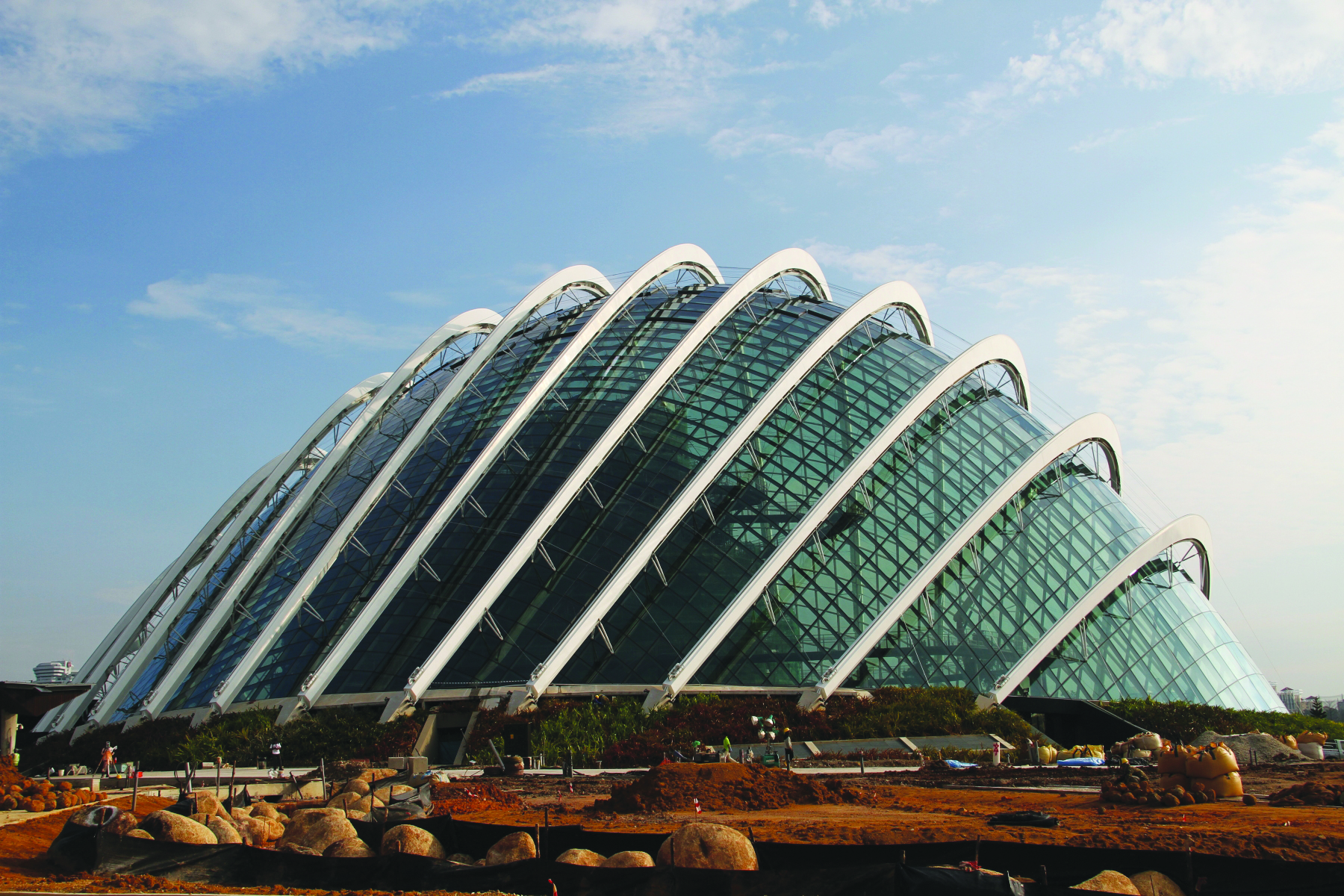
These structures tower over the three distinctive gardens that make up Gardens by the Bay – Gardens at Marina South, Gardens at Marina East and Gardens at Marina Central – and they serve as conservatories to a diverse range of plants from different climatic zones. Collectively, Gardens by the Bay provides the experience that Singapore is more than a place to work – it is also a compelling destination to live and play. It demonstrates that the boundary of garden design can be pushed beyond landscaping and horticulture to include a multitude of disciplines ranging from architecture to structural and environmental engineering. More importantly, Gardens by the Bay is testament to Singapore’s development experience as it signifies the maturity of Singapore’s Garden City concept.
Put in place by former Prime Minister Lee Kuan Yew in 1967, the Garden City concept integrates the natural environment into Singapore’s development and has been instrumental in creating a manicured environment of trees, flowers, parks and rich biodiversity. The opening of Gardens by the Bay, however, signifies the beginning of the next phrase of garden development in Singapore. Instead of creating parks and gardens, Gardens by the Bay launches the City in a Garden vision that aims to bring parks and green spaces into people’s homes and workplaces. By journeying through the development of the various parks, gardens and green spaces in Singapore over the years, this article not only examines the dynamics behind Singapore’s Garden City development strategy, but also shows how the Garden City concept has evolved into the City in a Garden vision.
The First Garden: The Singapore Botanic Gardens
The drive to build gardens in Singapore is not new. The earliest efforts can be traced to the few gardens and parks that were established during the colonial period, the most prominent of which was the Singapore Botanic Gardens. Plans for the Botanic Gardens materialised as early as 1822, when Stamford Raffles allocated a 19-hectare site at Fort Canning for the establishment of a Botanic and Experimental Garden in the Raffles Town Plan.1 Apart from being a keen naturalist, Raffles’ motivation for a botanic garden in Singapore can be attributed to the colonial tradition of developing botanical gardens in the tropics to experiment with the cultivation of revenue-earning crops and ornamental plants, as well as for the research and preservation of native plants. However, attempts to develop a botanic garden to reach the scale of other noteworthy gardens in the British Empire at the time – such as the Pamplemousses in Mauritius and the botanical gardens of Calcutta, Trinidad and Penang – were hampered by the lack of proper administration and government support. By 1829, the Botanic Gardens project had come to a standstill and the land on which it stood was parcelled out for other public projects. It was revived briefly in 1836 on a smaller scale occupying a 2.8-hectare site, but high upkeep costs eventually caused the project to be shelved in 1846.
Interest in the Botanic Gardens revived in 1859, this time led by the Floricultural and Horticultural Society. To pick up where the abandoned garden at Fort Canning had left off, one of the society’s first steps was to reposition the Botanic Gardens as a landscaped ornamental garden and leisure park as well as an experimental horticulture plot. The society also relocated the Botanic Gardens to a 23-hectare tract at Tanglin, where it is presently located. With more support, development of the new Botanic Gardens quickly gained traction. By the time the management of the Gardens was handed over to the colonial government in 1874, it had a Main Lake, its trademark ring pathways and was organising flower shows and horticultural fetes to attract visitors.
The Botanic Gardens grew under the administration of botanists and horticulturists such as Henry James Murton, Nathaniel Cantley and Henry Nicholas Ridley. Murton, for instance, established the Economic Garden in 1879 for the conservation and research of plants with economic potential, while Cantley brought order to the rapidly growing garden by introducing by-laws for visitors and hiring staff to label the plants and trees in the garden. Thereafter, under Ridley’s stewardship, the Botanic Gardens planted the region’s first rubber trees, and later gained fame when it became the major supplier of rubber seeds during the rubber rush in the early 1900s. Ridley also greatly expanded the Gardens’ collection by adding plants that he had gathered from his explorations in the Singapore heartlands and the region. Perhaps one of his most important additions was the orchid hybrid Vanda Miss Joaquim, which was later adopted as Singapore’s national flower.
In Need of a Greening Policy
Despite the rapid expansion of the Singapore Botanic Gardens, its greening enterprise was not transferred to urban areas of Singapore. Prior to 1965, the only sizeable public parks in Singapore were the Botanic Gardens and the Esplanade.2 By contrast, the city area was devoid of trees and lush greenery could only be found in the suburbs within the premises of large colonial bungalows. To a large extent, the absence of greenery in Singapore was because gardening was considered more of a personal pursuit.3 The colonial government did not have a declared objective of introducing greenery or creating green spaces to improve the urban environment or to enrich people’s lives. Although the colonial government had initiated tree-planting campaigns in the 1880s and established a nature reserve at Bukit Timah in 1883, public parks and gardens at the time were conceived of as isolated public recreation spaces. They were created as an afterthought on an ad-hoc basis and catered mainly for passive recreation. For instance, the Esplanade, though a popular spot for the general public, was fitted with modest facilities and mostly barren with very few trees.4
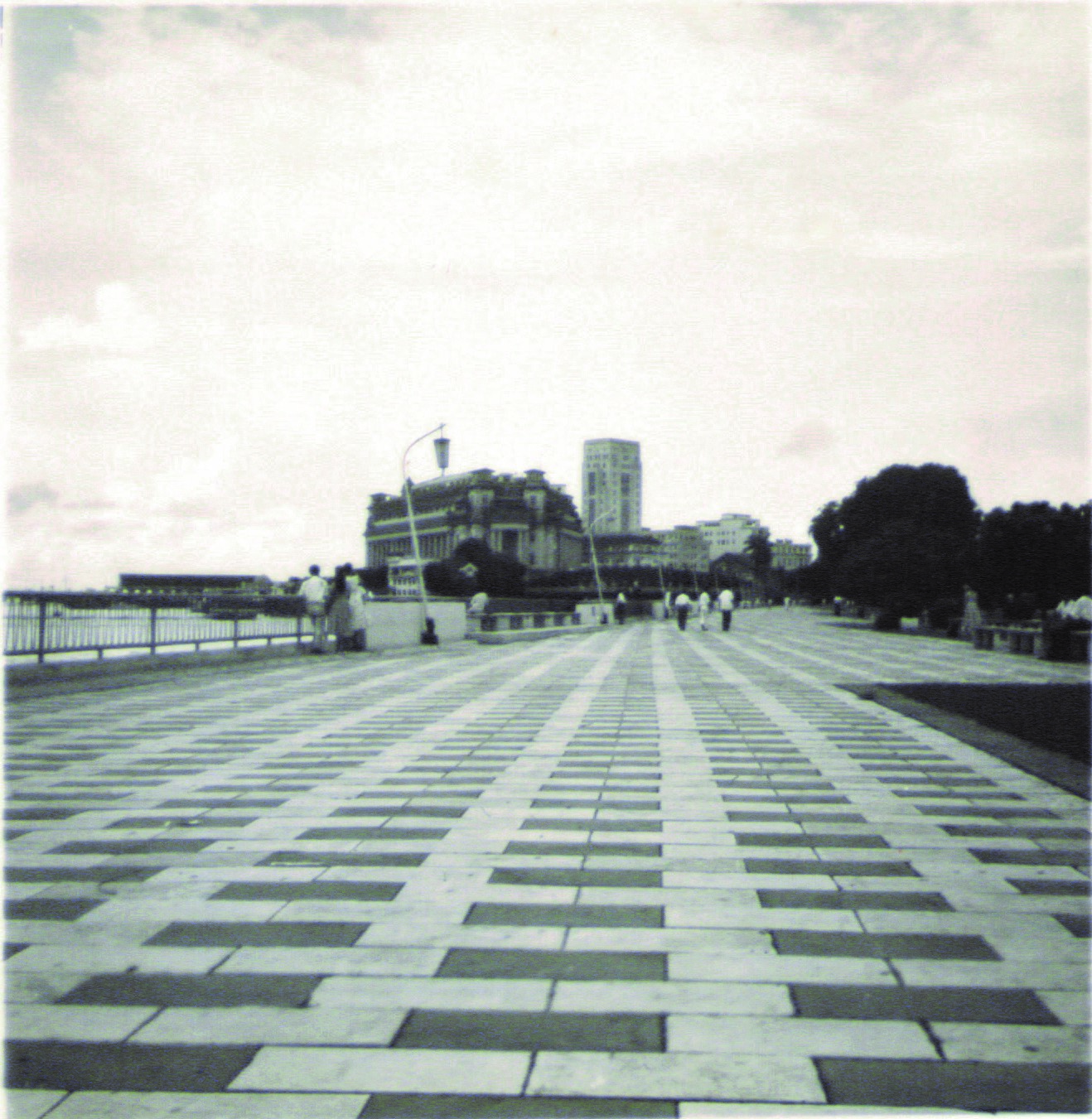
The lack of attention to the provision of green spaces persisted until the first Master Plan was adopted in 1958. In the Master Plan, the need to create green spaces was based on a number of considerations. For instance, a green belt was proposed for the urban population and to stop the continued expansion of the central area. Land was also set aside along the coasts of Bedok, Changi and Pasir Ris and in the city area for recreational development. The Master Plan even laid out a long-term goal to increase the amount of green spaces in the urban area from 263 ha in 1953 to 420 ha by 1972.
Even then, creating green spaces was still not a government priority. This was because the prevailing government policy at the time was to allocate as much resources as possible to solving chronic housing and employment problems.5 There were also no legal powers for the provision of green spaces in city planning. As a result, green spaces in most housing estates built in the late 1950s and early 1960s were kept to a minimum.6 As more such estates were developed and natural surroundings bulldozed to make way for other developments, Singapore’s urban landscape was slowly turning into a concrete jungle. Aware of this trend, the newly elected government led by the People’s Action Party (PAP) tried to inject some greenery into Singapore’s urban settings in 1963 by initiating Tree Planting Day.7 However, it was not until the housing and industrialisation programmes were progressing at a satisfactory rate in the mid-1960s that the greening of Singapore became a matter of public policy.8
Taking the First Step: Planting Trees and Shrubs
The launch of Singapore’s greening policy was marked by the introduction of the Garden City concept in May 1967 by former Prime Minister Lee Kuan Yew.9 The objective of was to make life more pleasant for Singaporeans by transforming Singapore from a city that was crowded with concrete buildings and infrastructure into a city with a clean and green environment, roads lined with trees, and ample green spaces for recreation. This green vision also had an economic angle: the aim of introducing such lush greenery was to show that Singapore was well organised and therefore a good destination for tourists and foreign investments.10
In the early phase, the Garden City concept was implemented in the form of an intensive tree-planting programme to recreate in Singapore the avenues of trees and abundant lush greenery that Prime Minister Lee came across in his trips overseas.11 This task was spearheaded by the Parks and Trees Division (PTD), the predecessor of the current National Parks Board (NParks).12 As the tree-planting programme was to take place mostly within the urban environment, the PTD was presented with several problems. First, the soil in the city area was not good enough to support plant growth. Second, there was limited space for tree planting as most of the areas within the city, including sidewalks and roads, were covered by concrete and tarmac. Third, there was a need to find suitable tree species that were not only hardy and fast-growing but also able to provide sufficient shade.13 To address these issues, the PTD adopted the simple solution of adding planting platforms on road pavements to provide space for trees to be grown. It also formulated better tree-planting technique and identified suitable tree species to be used. In the early years, the angsana, rain tree, coral tree and pong-pong were the most widely planted as they were able to grow in poor soil conditions and took considerably less time than normal trees to reach a sizeable height. In addition, these species could withstand rough handling when transported. In later years, flowering trees such as the yellow flame and the red flame as well as trees with fragrant flowers like the tembusu and gardenia were added to increase the variety of trees that were planted.
The tree-planting programme turned out to be very successful. Over 14,300 new trees were planted by the end of 1967; by 1970, the total number of newly planted trees rose to 153,000.14 To maintain the momentum, Tree Planting Day was reintroduced in 1971 as an annual event involving students, grassroots leaders and residents living in both public and private housing estates. Numerous nurseries were also set up to supply the seeds and saplings needed for the tree-planting programme.15 This was followed by the passing of the Trees and Plants (Preservation and Improvement of Amenities) Act in 1971.16 Designed to conserve the newly planted trees and other trees growing on vacant or relatively undeveloped land, the Act made it an offence for any person to damage or remove trees growing in public spaces.
Besides trees, the [Parks and Tree Division] began using shrubs such as bougainvillea and cassia to add colour to roads and expressways that were already lined with trees. Different varieties of creepers, palms and shrubs were also used to conceal concrete structures such as flyovers, overhead bridges, retaining walls and vehicular guardrails to soften the concrete urban landscape.
As the tree-planting programme was also pursued by other government agencies such as the Housing and Development Board (HDB) and the Jurong Town Corporation (JTC) in their own domains, a high-level Garden City Action Committee was formed in 1973 to coordinate the greening activities of the various government agencies.17 By then, the greening of Singapore had found other forms of expression. Besides trees, the PTD began using shrubs such as bougainvillea and cassia to add colour to roads and expressways that were already lined with trees.18 Different varieties of creepers, palms and shrubs were also used to conceal concrete structures such as flyovers, overhead bridges, retaining walls and vehicular guardrails to soften the concrete urban landscape.
To create a more comprehensive approach to sustain the tree and shrub planting programme, a new Parks and Trees Act was introduced in 1975.19 While preserving the tree conservation provisions set by the Trees and Plants Act in 1971, the new legislation laid out the first set of guidelines mandating that space had to be set aside for greenery in open spaces and in development projects such as roads and open car parks. For instance, the legislation stipulated that new major roads had to provide a centre divider with planting verges and new open car parks had to separate their rows of parking lots with a median for tree planting. Similarly, plazas and other large concrete areas were required to set aside about 30 percent to 40 percent of its given space for trees or shrubs. Besides introducing a greenery component in land use, the Parks and Trees Act also contained provisions requiring all trees, shrubs and creepers to be inspected and pruned regularly. This was to ensure that the greenery would be properly maintained to prevent unruly or dangerous growth.
The guidelines set by the Parks and Trees Act were adopted by all government agencies involved in development projects around Singapore. It was administered by the Parks and Recreation Department, which replaced the Parks and Trees Division in 1975. The Parks and Trees Act had a significant impact on the rate of tree planting: the number of new trees planted from 1974 to 2009 rose significantly from 149,650 to about 1.3 million.20
Taking the Next Step: Creating Parks and Gardens
As these trees and shrubs were being planted, parks and gardens were also developed in tandem. During the initial years after the Garden City concept was announced, the development of parklands was mostly in the form of upgrading existing ones.21 Public amenities and facilities such as park shelters, restrooms, benches, walkways, cycling tracks, chess tables, car parks and lightings were added to improve the park facilities as both active and passive recreation spaces. Trees and shrubs were also planted to beautify the parks and provide shade for users. From the mid-1970s, the PTD, together with other government agencies such as JTC, HDB and later the Urban Redevelopment Authority (URA), began placing more emphasis on creating new parks. To a large extent, this shift was due to the release of the revised Master Plan of 1975 that gave statutory recognition for the provision of green spaces in land use.22 In the revised Master Plan, green spaces served two essential functions: recreational areas for an increasingly affluent population, and ventilation, or ”green lungs”, for built-up areas. To support the park development programme, the Master Plan set aside a considerable amount of land for new parks. To measure the adequacy of green spaces in Singapore, it also adopted a standard based on the provision of green spaces relative to the communities they served.
As a result, parks built from the mid-1970s onwards were different from ones built in earlier years. Not only were they bigger, the newer parks were equipped with a range of facilities to meet the diverse recreational needs of different population groups. These parks were also aesthetically designed to give each its own identity. Generally, the newer parks can be divided broadly into three categories, each performing certain roles.23
Regional parks formed the first category. Ranging from 10 ha to 200 ha in size, regional parks function as recreational grounds for the general population, offering all the ancillary facilities and amenities required for active and passive recreation.24 Most of the regional parks were located on reclaimed land along Singapore’s coastlines, but many could also be found in more central parts of the island, carved out from water catchment areas or from spaces bordering nature reserves. A notable early regional park is East Coast Park. Developed by the PTD and later the Parks and Recreation Department in four phases over a 12-year period from 1971 to 1983, East Coast Park was spread over a reclaimed area of 209 ha and spanned more than 20 km in length. The park was designed with the theme, “Recreation for All”. Besides its thick belt of greenery, the park also has a 15-kilometre-long sandy beach, 15 km of jogging track, a 14-kilometre cycling track and a 4-hectare swimming lagoon. These facilities were complemented by other recreational developments such as holiday chalets, camping spots, barbecue pits, a fishing jetty and a recreation centre consisting of a bowling alley, a tennis centre and restaurants. Other regional parks that also provided such elaborate recreational functions included Mount Faber Park, Labrador Nature Park, West Coast Park, Pasir Ris Park, Seletar Reservoir Park, MacRitchie Reservoir Park and Bedok Reservoir Park.
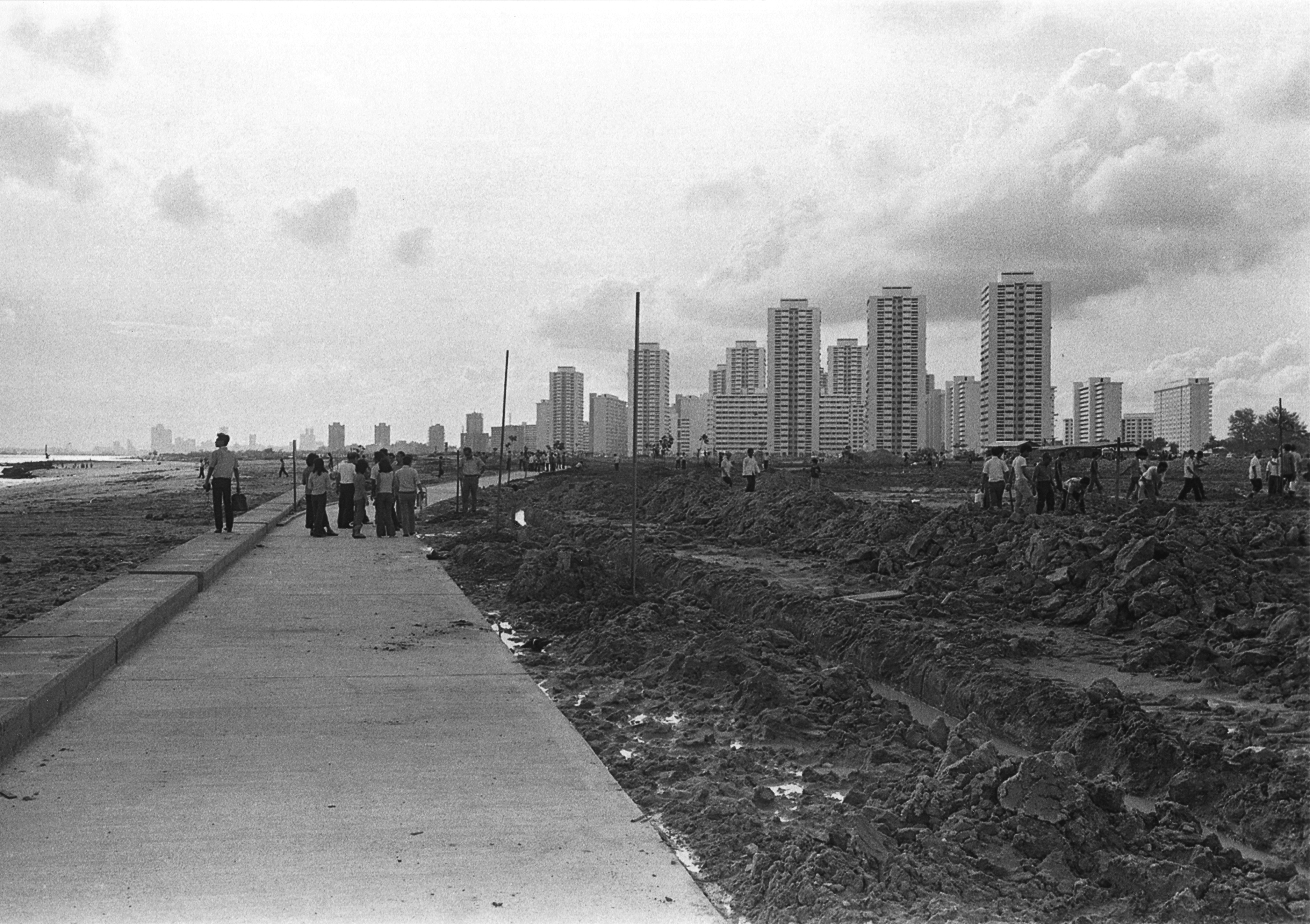
The second category of parks comprised community or town parks. While regional parks served the general population, community parks catered to residents of HDB housing estates. Depending on the size of the population they served, these parks ranged from 1,000 sqm to 40 ha (400,000 sqm).25 Even though community parks were smaller than regional parks, they had the full range of facilities associated with the larger parks. Among these were jogging tracks, children’s playgrounds, playing fields, multipurpose courts, fitness corners and landscaped areas with seats and shelters. Thick groves of trees were planted to provide shade for their users. As community parks were designed to be within walking distance for residents living close by, they were usually centrally located within HDB estates or in proximity to the recreational green spaces provided in HDB estates. Some of the earliest community parks were Toa Payoh Town Park, Bishan Park, Duxton Plain Park and Ang Mo Kio East and West Gardens. As it was envisaged that each HDB estate would have at least one community park, later examples of community parks can be found in HDB estates developed in the 1980s such as Woodlands and Bukit Batok. In most cases, community parks were developed either by the HDB or the JTC before being handed over to the Parks and Recreational Department for maintenance.
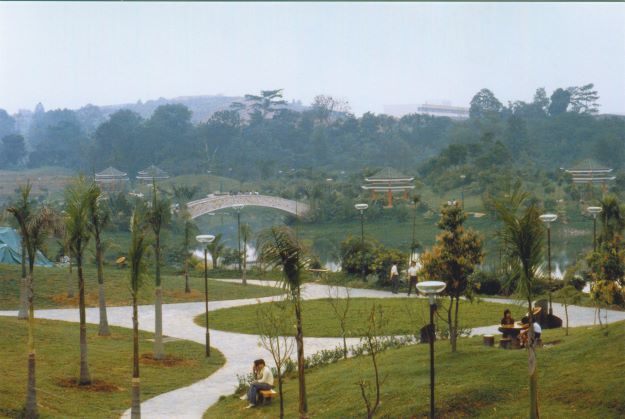
Parks and open spaces in the city area made up the third category of parks. Ranging from 1,000 sqm to 30 ha (300,000 sqm), these parks were created by the URA and its predecessor, the Urban Development Department, under the urban redevelopment programme to beautify the cityscape and to function as “green lungs” amid the built-up city environment.26 These parks varied in type from small pocket parks and shaded plazas located between buildings, to large city parks and open spaces. Regardless of their sizes, city parks and open spaces were usually designed to bring out their unique characteristics and reinforce the mood of their surrounding areas. For instance, parks near government district areas such as Merlion Park, Fort Canning Historic Park and War Memorial Park were designed with a nation-building narrative. In general, parks and open spaces in the city area were used by the general public, city dwellers and tourists as resting places or tourist spots, and by office workers as congenial sites for lunch.
The move to create new parks had a profound effect on the extent of green spaces in Singapore. When the park development programme began taking off in the mid-1970s, Singapore only had 879 ha of parks and green spaces. By 2011, however, Singapore was home to 5,083 ha of parks and green spaces and 3,347 ha of nature reserves, which together made up more than 8 percent of Singapore’s total land area. In the same period, the number of newly created parks in Singapore rose from only 13 to 317.27 To enable better administration of these parks, the Parks and Recreational Department was reconstituted into a fully fledged statutory board – the National Parks Board (NParks).
Enriching the Garden City Experience
Towards the end of the 1980s, the government began exploring ways to enrich the Garden City experience that had been put in place by numerous recreational parks and lush greenery. The result was the launching of the Green and Blue Plan.28 Proposed in the Concept Plan of 1991, the Green and Blue Plan aimed to give the heightened impression of a Garden City by turning Singapore into one big playground. One major tool used to realise this initiative was to create a network of park connectors as green corridors to link all the parks, waterways and nature sites in Singapore.29 By providing access to different parks around Singapore, these corridors offered additional pathways for activities like jogging, in-line skating and cycling. They also enabled park users to mix and match their leisure pursuits. For instance, a park connector linking East Coast Park and Pasir Ris Park would allow a user to windsurf at East Coast Park in the morning before cycling to Pasir Ris Park for an evening barbecue party. These park connectors were created through the optimisation of unused land such as drainage reserves, foreshore and road reserves. They were also fitted with facilities such as lighting, rain shelters and communal nodes. Native plant species were planted to enhance the connectors, making them lush, nature corridors. The earliest park connector was the stretch linking Toa Payoh New Town Park, Bishan Park and Lower Peirce Reservoir Park, followed by the corridor linking East Coast Park and Pasir Ris Park. By the end of 2011, NParks had created a total of 41 park connectors measuring 160 km, and plans were in place to expand the network further.30
Besides establishing park connectors, the Green and Blue Plan also contained plans to conserve the natural environment. This was to ensure that the natural heritage of Singapore would be safeguarded and the continued greening of Singapore would not be restricted to manmade areas. At the time the Green and Blue Plan was announced, more than 3,000 ha of Singapore’s natural landscape were earmarked for conservation.31 Some of the conservation sites include nature sites at the Bukit Timah and Central Catchment nature reserves, the mangrove swamps at Mandai, Changi Creek and Pasir Ris, and the coral reef at Pulau Semakau. New conservation areas were also created from farming plots. For instance, the Sungei Buloh Wetland Reserve located at the northern west coast of the island was developed from vacated prawn farms. Besides serving as nature parks, these conserved areas also functioned as natural habitats and sanctuaries to protect the flora and fauna of Singapore.
Other than the Green and Blue Plan, NParks also introduced many community partnership programmes to further enrich the overall Garden City experience and to instil a green consciousness among Singaporeans. One key example is the Community in Bloom (CIB) programme.32 Launched in 2005, this programme allows Singaporeans to form gardening groups to create and maintain new gardens. These CIB gardens are usually located on assigned areas within public and private housing estates. Some of them can also be found within the premises of schools or public places such as hospitals. The groups tending the CIB gardens are left to their own devices. They can choose to plant flowers or grow their own vegetables, herbs and fruit trees. If needed, gardening groups can seek advice from NParks or the Agri-Food and Veterinary Authority on seeding, fertilisation and irrigation.
In addition to CIB, there are other community programmes such as Adopt-A-Park and Park Watch.33 These programmes allow volunteers to participate in various park outreach activities such as conducting guided tours or organising cultural and artistic performances to attract visitors. The main objective is to encourage members of the public to engage in activities on a personal level to help sustain parks and the Garden City concept. To further cement community participation and appreciation of the Garden City concept, NParks launched the Singapore Garden Festival in December 2006.34 The biennial festival was to bring together local gardening communities and experts as well as award-winning international garden and floral designers to exhibit their green creations.
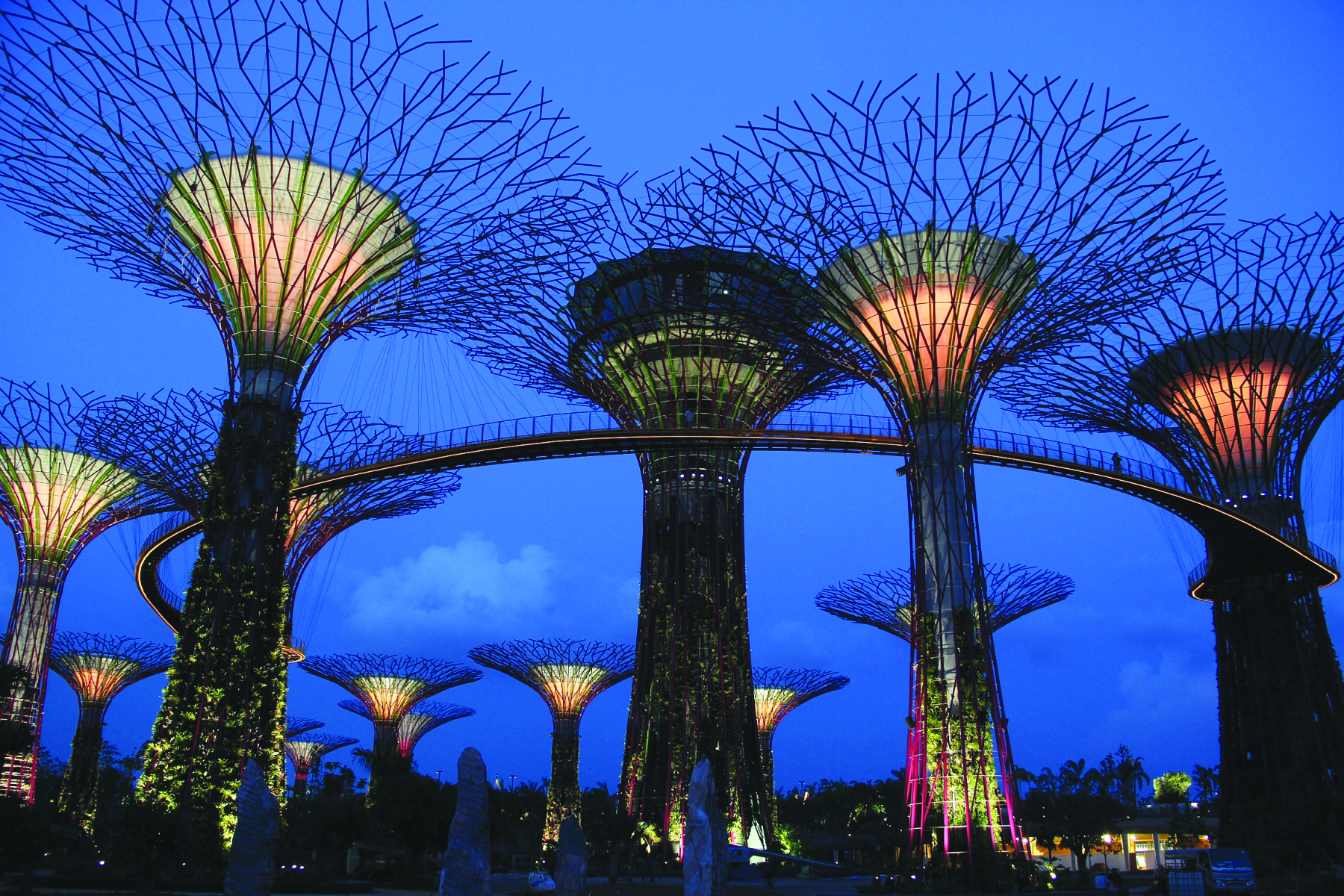
The Next Lap: City in a Garden
Even with the introduction of various programmes to enrich the Garden City concept, tree planting and the creation of parklands remain fundamental to the sustainability of the concept. For instance, Tree Planting Day has been an annual tradition in Singapore since 1971. Today, it is an important component of a larger green programme known as Clean and Green Week. Launched in 1990, Clean and Green Week is an annual campaign aimed at maintaining the green consciousness created by Tree Planting Day as well as increasing awareness of environmental issues such as recycling, green consumerism and creating a litter-free environment.35 In addition, in the latest Parks and Waterbodies Plan released by NParks in 2002 to lead the greening effort in Singapore for the next 10 to 20 years, the creation of new parks remains a key priority.36 The plan aims to create an additional 1,200 ha of new parks and to provide greater diversity by capitalising on natural assets such as hills, nature areas and waterbodies. The plan also looked at ways to develop better facilities and amenities in existing parks and to improve accessibility to parks and nature areas by extending park connectors.
To supplement these efforts, a variety of streetscape and beautification treatments have been introduced to enhance the identity of greenery on roads and buildings.37 For instance, roads already lined with lush and picturesque greenery such as Mandai Road and Mount Pleasant Road are protected as Heritage Roads. At the same time, a vertical greening programme was introduced to encourage property developers to beautify their high-rise developments with greenery.38 To incentivise developers to adopt the vertical greening programme, the URA allows the provision of additional gross floor area in buildings for the creation of balconies and sky terraces as spaces for greenery.
Ultimately, the Parks and Waterbodies Plan aims to develop the Garden City concept into the City in a Garden vision where Singaporeans will have a garden in their homes instead of gardens outside their homes.39 To lead the City in a Garden vision, NParks and the URA worked together to develop one of the largest dedicated green spaces in Singapore. Known as Gardens by the Bay, this development reinforces Singapore’s identity as the world’s premier Garden City.40 Located on waterfront land in the heart of the Marina Bay area, Gardens by the Bay offers a different greening experience for Singaporeans to live, work and play in a closer to water and surrounded by lush greenery. The Gardens is projected to be a destination attraction for all, capitalising on its proximity to events and water activities, and nearby attractions such as Esplanade – Theatres on the Bay, Singapore Flyer, Marina Barrage and Marina Bay Sands.

REFERENCES
Body to make people care for trees. (1967, April 19). The Straits Times, p. 13. Retrieved from NewspaperSG.
Chong, T. (2010). Management of success: Singapore revisited. Singapore: Institute of Southeast Asian Studies. (Call no.: RSING 959.57 MAN)
‘City in a Garden’. (2002, October 21). Today, p. 1. Retrieved from NewspaperSG.
First stage of nature corridor project to link parks opens. (1992, August 15). The Straits Times, p. 23. Retrieved from NewspaperSG.
Greener S’pore drive gets boost on Sunday. (1990, October 30). The Straits Times, p. 17. Retrieved from NewspaperSG.
Info-Communications Development Authority of Singapore. (2009, October 5). Tree Talk.iN.SG Newsletter. Retrieved from Info-Communications Development Authority of Singapore website.
Kiew, R., et al. (2006). The gardens at a glance. Singapore: National Parks Board, Singapore Botanic Gardens. Retrieved from BookSG.
Koh, B.S. (2012). Perpetual spring, Singapore’s Gardens by the Bay. Singapore: Marshall Cavendish Editions. (Call no.: RSING 712.5095957 KOH)
Lee, K.Y. (2000). From third world to first: The Singapore story: 1965–2000. Singapore: Times Editions. (Call no.: RSING 959.57092 LEE)
Lee, S.K. (1992). More than a garden city. Singapore: Parks & Recreation Dept., Ministry of National Development. (Call no.: RSING 333.783095957 LEE)
Lim-Leng, G.S.Y. (2007). Community in bloom: A concise guide to tropical gardening. Singapore: National Parks Board. (Call no.: RSING 635.9523 LIM)
Ministry of National Development. (2007). From Garden City to City in a Garden. Retrieved from Ministry of National Development website.
National Parks Board (Singapore). (2011). Annual report 2011. Singapore: National Parks Board. Retrieved from BookSG.
Now you can arrest vandals. (1971, December 16). The Straits Times, p. 1. Retrieved from NewspaperSG.
‘Plant a tree’ drive in S’pore. (1963, June 12). The Straits Times, p. 9. Retrieved from NewspaperSG.
Ramchandani, N. (2007, November 10). Gardens to do a garden city proud. The Business Times, p. 2. Retrieved from NewspaperSG.
Sanson, V. (1992). Gardens and parks of Singapore. Singapore: Oxford University Press. (Call no.: RSING 712.5095957 SAN)
Seah, C. (2006, January/February). A city in a garden. Skyline. Retrieved from URA website.
S’pore to become beautiful, clean city within three years. (1967, May 12). The Straits Times, p. 4. Retrieved from NewspaperSG.
Singapore. Planning Department. (1975). Revised Master Plan: Report of survey (p. 5). Singapore: The Department. (Call no.: RCLOS 711.4095957 SIN)
Singapore. Public Works Department. (1971). Annual report. Singapore: Government Print Office. (Microfilm no.: NL12677)
Singapore. Public Works Department. (1974). Annual report. Singapore: Government Print Office. (Microfilm no.: NL12677)
Tan, A., & Cheong, J. (2006, December 21). Flower power. The Straits Times, p. 6. Retrieved from NewspaperSG.
Tinsley, B. (1999). Visions of delight: The Singapore Botanic Gardens through the ages. Singapore: The Garden. (Call no.: RSING 580.74459597 TIN)
Urban Redevelopment Authority (Singapore). (1991). Living the next lap: Towards a tropical city of excellence. Singapore: Urban Redevelopment Authority. (Call no.: RSING 307.36095957 LIV)
Urban Redevelopment Authority (Singapore). (2002). Subject group report on parks & waterbodies plan and rustic coast. Singapore: Urban Redevelopment Authority. (Call no.: RSING q333.72095957 SUB)
William, W. (2000). Singapore: City of gardens. Hong Kong: Periplus Edition. (Call no.: RSING q915.957 WAR)
Wong, T.W., et al. (2011). Trees of the Istana: Treasures in the domain. Singapore: Suntree Media Pte. Ltd. (Call no.: RSING 582.16095957 TRE)
Work to start on Marina Bay’s three gardens. (2007, November 5). The Straits Times, p. 20. Retrieved from NewspaperSG.
Yeh, S.H.K. (1989). The idea of the garden city (pp. 813–832). In K.S. Sandhu & P. Wheatley (Eds.), Management of success: The moulding of modern Singapore. Singapore: Institute of Southeast Asian Studies. (Call no.: RSING 959.57 MAN)
Yuen, B. (June 1996). Creating the Garden City: The Singapore experience. Urban Studies, 33 (6), pp. 959–960. Retrieved from JSTOR via NLB’s eResources website.
NOTES
-
Yuen, Jun 1996, pp. 959–960. ↩
-
Planning Department, 1975, p. 68. ↩
-
Yuen, Jun 1996, p. 960. ↩
-
The Straits Times, 12 Jun 1963, p. 9. ↩
-
Planning Department, 1975, p. 68. ↩
-
The Straits Times, 12 May 1967, p. 4. ↩
-
The Straits Times, 19 Apr 1967, p. 13. ↩
-
Public Works Department, 1974, p. 52. ↩
-
Public Works Department, 1971, p. 63. ↩
-
The Straits Times, 16 Dec 1971, p. 1. ↩
-
Info-Communications Development Authority of Singapore, 5 Oct 2009. ↩
-
Planning Department, 1975, pp. 68–69. ↩
-
National Parks Board, 2011, pp. 48–49. ↩
-
Urban Redevelopment Authority, 1991, p. 28. ↩
-
The Straits Times, 15 Aug 1992, p. 23. ↩
-
National Parks Board, 2011, p. 49. ↩
-
Urban Redevelopment Authority, 1991, p. 31. ↩
-
Ministry of National Development, 2007. ↩
-
Ministry of National Development, 2007. ↩
-
The Straits Times, 21 Dec 2006, p. 6. ↩
-
The Straits Times, 30 Oct 1990, p. 17. ↩
-
Urban Redevelopment Authority, 2000. ↩
-
Seah, 2006. ↩
-
Urban Redevelopment Authority, 2002. ↩
-
The Business Times, 10 Nov 2007, p. 2; The Straits Times, 5 Nov 2007, p. 20. ↩

